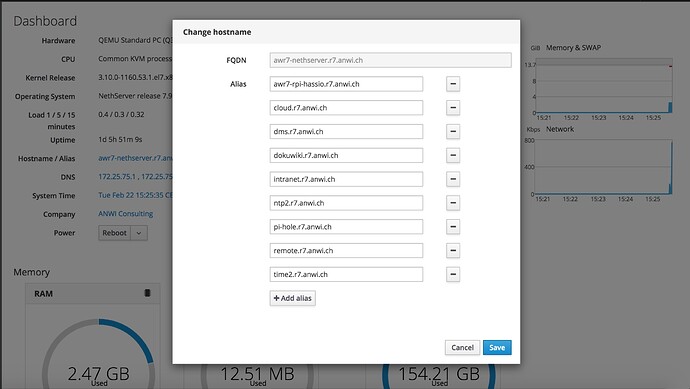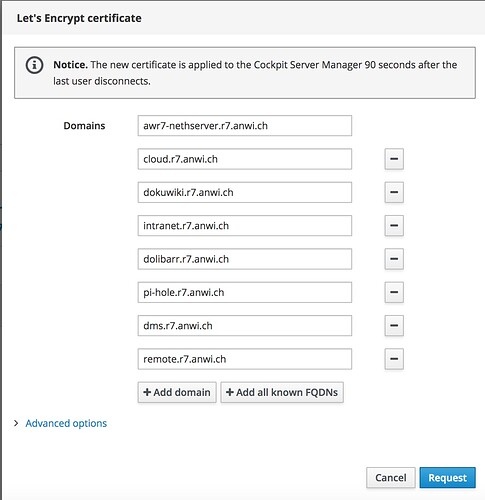Good Morning, Everyone.
I’m writing this to ask help with this setup: Letsencrypt for internal servers using cloudflare dns, ddns and nethserver-nginx as reverse proxy.
I’ve been a bit intimidated by this because I’m trying a setup that I’m not very familiar to configuring. I’m using NethServer 7.9.2009 on a protectli vault that I’ve got configured as a gateway with one interface going to an 8 port switch and one interface to an internet gateway that has the protectli in the DMZ.
I use namecheap ddns an made a wildcard ddns record. to point my domain name to my Nethserver.The nethsever apache page is reachable. I used cloudflares dns to take advantage of the api and letsencrypt. I’m trying to setup nethserver-nginx as the reverse proxy and I’m confused about a couple of things:
-
When I go to System → Services, Why can I not choose to release ports 80 and 443 from the Apache HTTPD and add to the Nginx service? I’ve disabled the apache webserver and removed the networks but that was all I could do. Everytime I try to change the ports on those two services, the tcp and udp fields are greyed out and If I mouse over them I get a red cross.
-
in /etc/nginx/conf.d/ I’m supposed to put my conf files, but I’m unaware of what the names of the files are! Is the name of the file with the server blocks called virtualhosts?
-
I tried to follow this article: userguide:let_s_encrypt_for_internal_servers [NethServer Wiki] but I get stuck at configuration.
when i issue the command “config setprop pki CrtFile /etc/pki/tls/certs/cert.crt”
bash returns: “config: command not found”. What package have I failed to install?
I’ve been trying to follow these examples on the Neth wiki and I’ve been searching around on the forum. I’m asking for help in hopes that someone can help an intermediate linux user who’s trying to learn more.
To whomever answers, thank you for your input.
m3shguy



